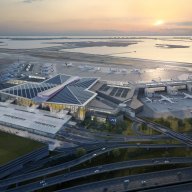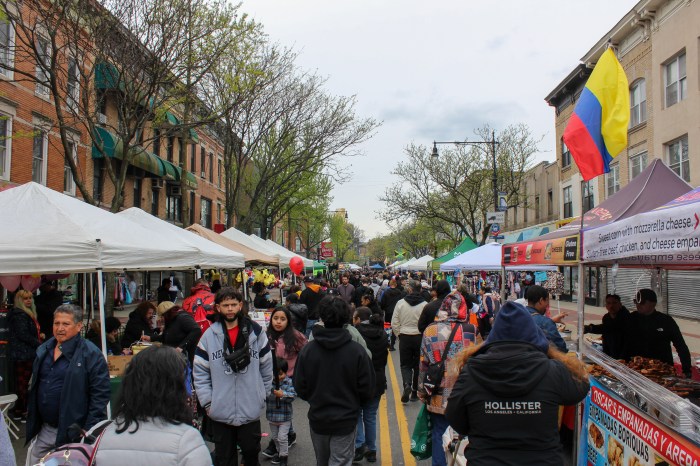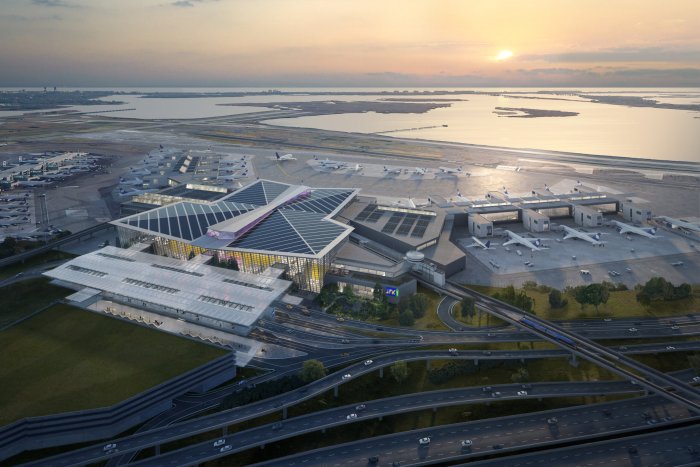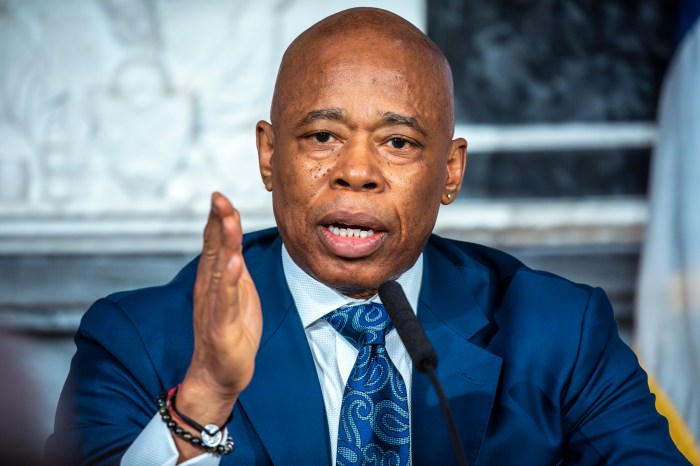By Courtney Dentch and James DeWeese
But as the $6 billion project, which would make use of existing AirTrain and Long Island Rail Road tracks, moves forward, some civic leaders and consumer advocacy groups have expressed concern that the rail link could bypass retail and other development in Jamaica and siphon money from more urgently needed projects.
Speaking at a luncheon at the Ritz-Carleton hotel in Battery Park May 5, Pataki said the new link, which could be operational as early as 2013, would cut travel time between Jamaica and downtown by 15 minutes for commuters. Airport users, who would ride trains that departed four times per hour, could travel between the airport and Manhattan in 36 minutes.
“By offering a one-seat ride to JFK, this line will offer a convenient, no-transfer rail route for Manhattan's airport-bound passengers – business people, residents and visitors – taking them directly to their terminal,” Pataki said. “And by doing so, it will position New York alongside the other world-class cities that already have such seamless global access … it's about time.”
Citing the results of a yearlong feasibility study, Pataki said he supported the new tunnel option over a competing proposal to make use of the existing Montague tunnel, which services the M and R subway lines. Pataki joined Mayor Michael Bloomberg, who supports the new East River route.
The new tunnel, the study said, would lead to greater time savings, increase the future capacity of the network by allowing an eventual link to the nascent Second Avenue subway line as well as the E Train and spare existing transit riders from disrupted service.
The new and old tunnel options would both reduce crowding on the city's No. 2 and 3 subway lines, Pataki said, by providing commuters with a more direct route to downtown.
“Our new project will thus enable us to create a better transit system for several communities simultaneously,” the Republican governor said.
According to the feasibility study, differentiated commuter and airport service would be provided. Commuter trains traveling the rail link would depart from Fulton Street in Lower Manhattan every six minutes, stopping at East New York, Nostrand Avenue and Atlantic Avenue before arriving in Jamaica 21 to 22 minutes later.
Airport-bound trains would depart every 15 minutes stopping only at Atlantic Avenue before arriving at the airport 36 minutes later.
But funding is still in question for the plan, which Pataki said could cost up to $6 billion. The Port Authority has already committed $560 million to the project and Pataki urged the agency to review its capital plan and dedicate additional money to the link. He is also looking for aid from the federal government, including a piece of the remaining funds from the $21 billion in Sept. 11 relief monies.
The commuter line would provide service to more than 100,000 passengers a day, Pataki said. But Gene Russianoff of the transportation advocacy group Straphangers Campaign said he wonders if ridership warrants the investment.
“That's the $6 billion question: Will this move enough people to make it worth it,” Russianoff said. “The problem is there are all these competing priorities.”
In a statement, Straphangers identified three projects it considered to be more important: a $15 billion investment in existing transit infrastructure including subway and train cars and buses, the construction of a Second Avenue subway line, and the East Side access project that would link the Long Island Rail Road to Grand Central Station.
The mayor's office disagreed.
“We believe that from a transportation standpoint (the JFK rail link) is the most important thing we can do for Lower Manhattan,” said Deputy Mayor Dan Doctoroff during a meeting with the TimesLedger Newspapers Tuesday.
Doctoroff said Lower Manhattan had long been denied access to the rapidly expanding Long Island labor market by a circuitous route that brought commuters into Midtown. He also said better transportation links with Manhattan would foster development in downtown Brooklyn and Jamaica by turning them into logical back-office sites for businesses headquartered in the city.
But business leaders are concerned that the one-seat ride, sometimes referred to as the Super Shuttle, would allow passengers to bypass Jamaica.
The AirTrain link now requires riders to transfer to the Long Island Rail Road or a subway for Manhattan-bound service, and merchants have been hoping to entice some of those passengers to shop in Jamaica.
Greater Jamaica Development Corporation has been working to develop a plan to create an airport village, dubbed JFK Corporate Square, outside the AirTrain station at Sutphin Boulevard and 94th Avenue. The group would like to see air industry businesses set up offices in Jamaica and ultimately a hotel and conference space in the area as well.
“We supported the Super Shuttle concept enthusiastically, contingent upon the state government not just utilizing Jamaica as just a transportation transfer point but acknowledging and enabling Jamaica to be the transportation hub it could be,” said Carlisle Towery, president of the Greater Jamaica Development Corp.
“I hope that what it could be for Jamaica will be realized for Jamaica,” he said. “We want to really be heard on the fact that Jamaica warrants special treatment because of its own opportunity and potential and needs.”
The LIRR rail link would connect to the AirTrain station in Jamaica using new hybrid trains that meet safety requirements for both the LIRR and the AirTrain tracks to the airport, Doctoroff said. The trains have yet to be developed.
“It sounds to me like they will have to replace the AirTrain cars,” Towery said. “Ten years from now the AirTrain equipment would be ready to be replaced.”
The AirTrain station would also have to be changed to add a new boarding platform, Towery said. The LIRR trains currently come in on a third-floor level just north of the AirTrain platform, which is on a fourth-floor level, Towery said.
Reach reporter Courtney Dentch by e-mail at news@timesledger.com, or call 718-229-0300, Ext. 138.

































